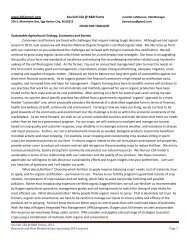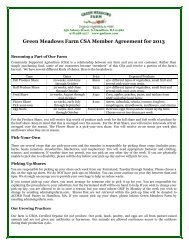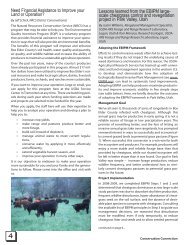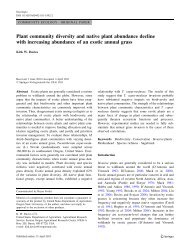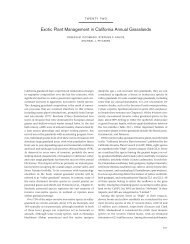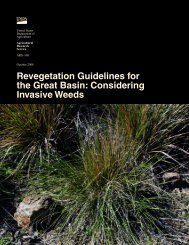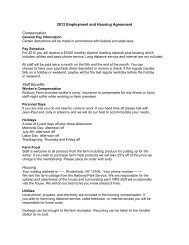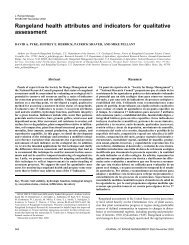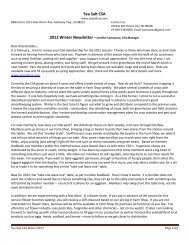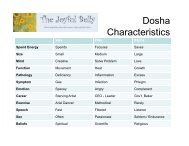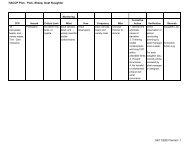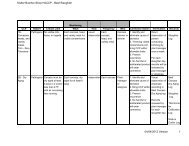“Green and Brown” Grazing Strategy
“Green and Brown” Grazing Strategy
“Green and Brown” Grazing Strategy
Create successful ePaper yourself
Turn your PDF publications into a flip-book with our unique Google optimized e-Paper software.
3) Frequency: Protect those you care about<br />
Probably the most straightforward of all grazing<br />
considerations, frequency refers to how often<br />
grazing is repeated, <strong>and</strong> in the <strong>“Green</strong> <strong>and</strong><br />
<strong>Brown”</strong> strategy this has implications<br />
specifically for desired species. Species that<br />
are grazed less frequently display greater leaf<br />
areas <strong>and</strong> attain a competitive advantage.<br />
Frequency has everything to do with the<br />
amount of time a desired plant has to recover.<br />
If desired plants are re-grazed as they are trying<br />
to re-grow, this will compromise the vigor of the<br />
plants.<br />
However, recognizing how frequent grazing<br />
sacrifices the resources in a plant can be used<br />
to the great advantage of a manager dealing<br />
with invasive annual grasses. In a <strong>“Green</strong> <strong>and</strong><br />
<strong>Brown”</strong> strategy, grazing should occur<br />
continuously when the invasive species are<br />
green. As soon as the desired species show<br />
green growth, the animals should be removed<br />
until most of the growth has occurred (for most<br />
species approximately 10 inches in height) to<br />
keep them strong <strong>and</strong> competitive. After this<br />
time the plants can be grazed under low<br />
frequency.<br />
Allowing desired perennial grasses to rest <strong>and</strong> re-grow will give them a competitive advantage.<br />
18 - Factor 3) Frequency



